How to use Japan’s new self-checkout supermarket carts

Will smart trolleys and mobile scanners soon become the norm across Japan?
Ever since the pandemic, Japan has had to rethink the way it does business, particularly when it comes to customer-facing roles. The shift to contactless systems continues to progress at a rapid pace, with some supermarket chains now adding smart carts and mobile scanning systems to their stores.
One such chain is Life, where customers have the option to use a mobile self-checkout service called Pipit Self. While the new service promises to make the shopping experience smoother and faster for the customer, there are some concerns about the service, so let’s take a look at how it works.

We came across Pipit Self at a branch in Higashi Nakano, Tokyo, where the mobile self-checkout service was introduced when the store reopened on 1 September. While the business hours at this branch are 9 a.m. until midnight, the service can only be used from 9 a.m. to 9 p.m.
▼ Those who use Pipit Self can pay by cash, card, or smartphone payment apps.
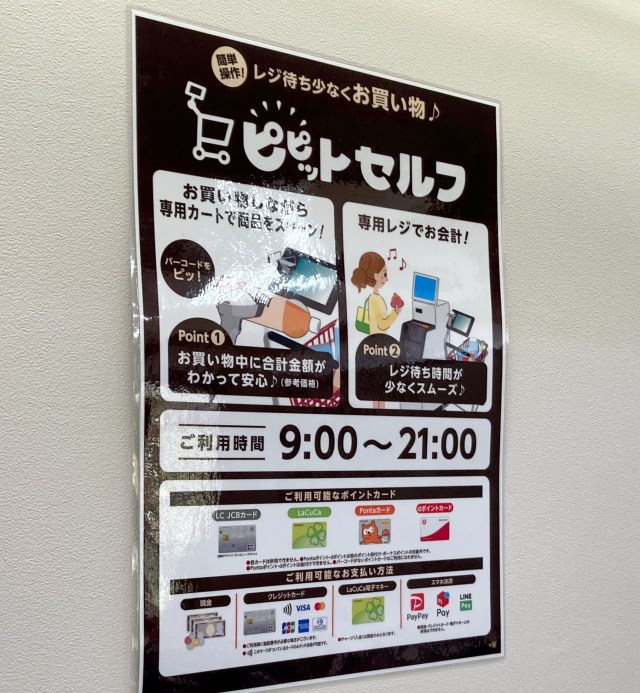
▼ The mobile service can be used with carts, which come with a tablet and scanner…
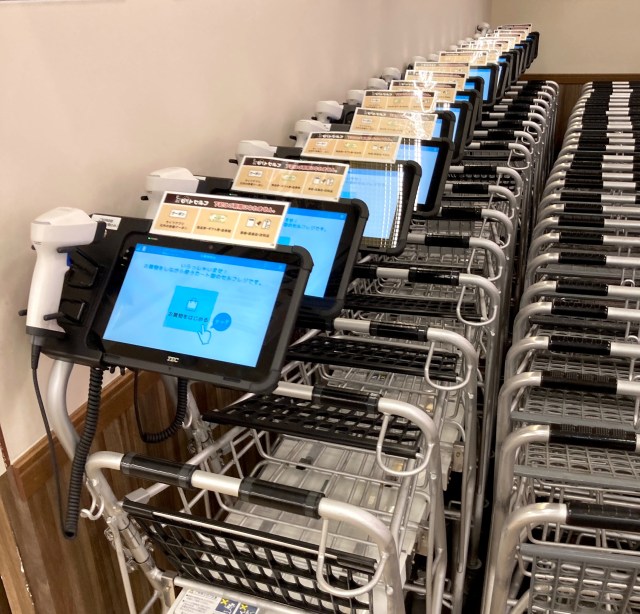
…or with handheld baskets, which don’t come with tablets, instead requiring the customer to use a smartphone to scan items. Customers can either use their own smartphone as a scanner by downloading the app, which can be accessed by scanning one of the QR codes at the bottom of this sign…
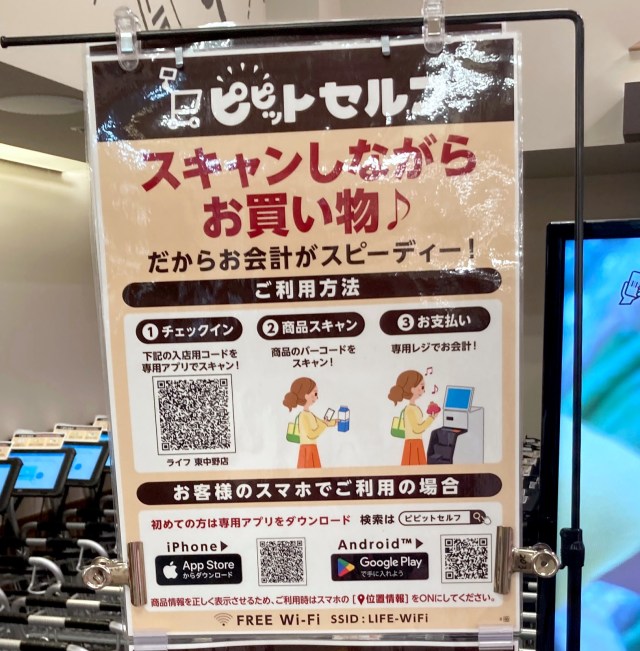
…or, if you don’t want to install the app, there are smartphone terminals available exclusively for use in the store.
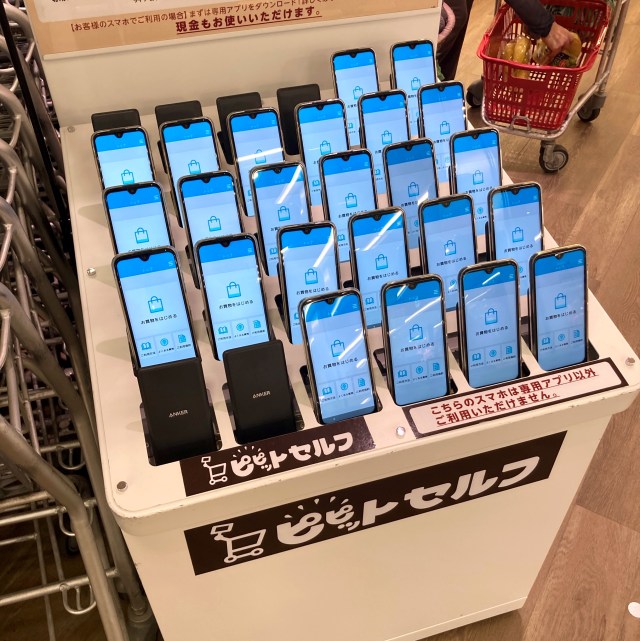
With our smartphones already full of apps we don’t often use, we opted to use one of these terminals for today’s shop.
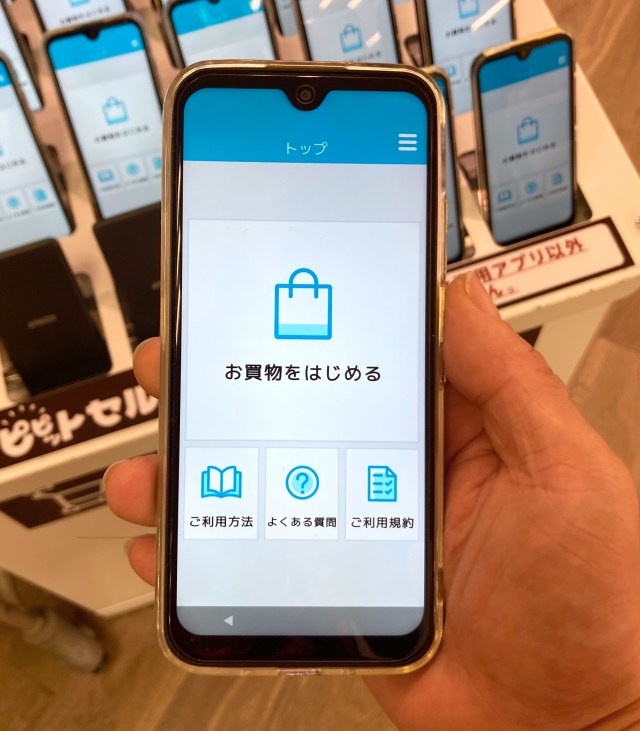
Whether you use your own smartphone or the one provided by the store, you’ll need to check-in first by scanning the entrance code, which makes its importance known by being the largest QR code on the sign by the carts.
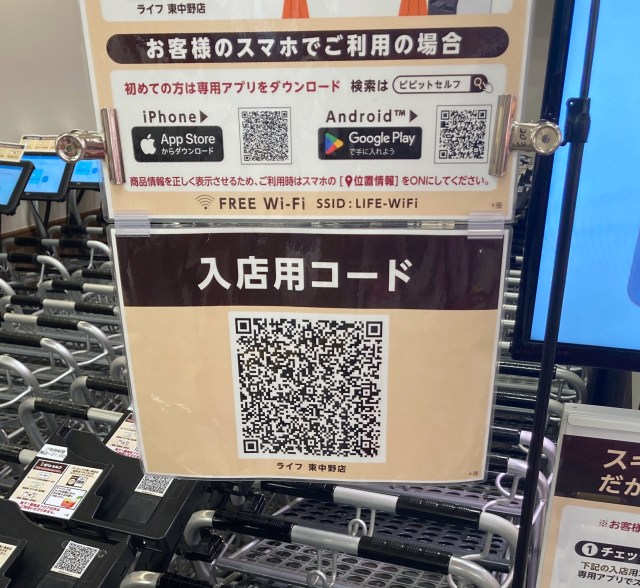
▼ Now it’s time to go shopping.
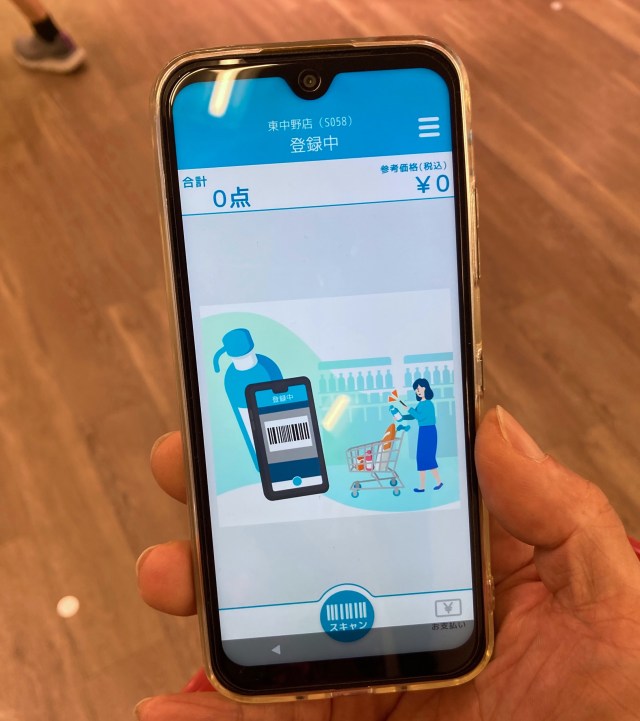
The first thing we picked up was a salad, so we scanned the barcode on the product and waited for the “connecting” dial to complete itself before popping it into the cart.
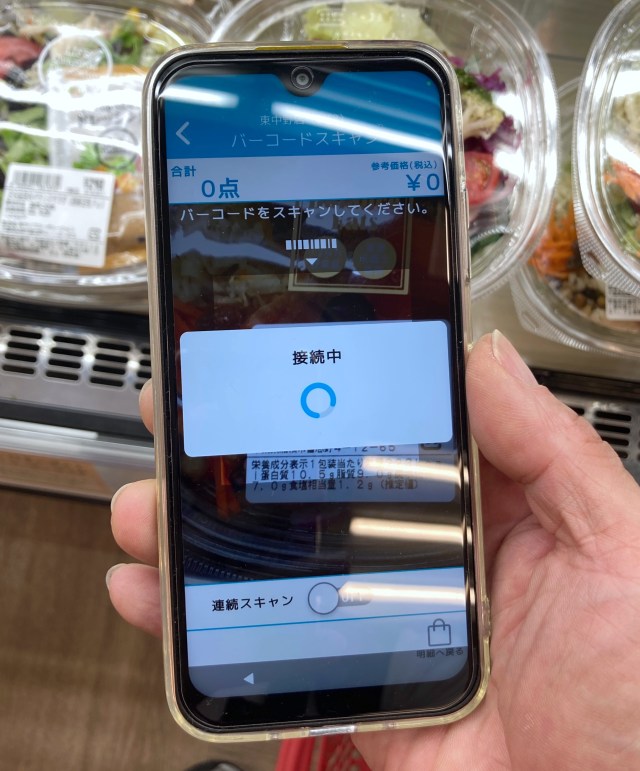
The screen displayed the pre-tax cost of the item in yellow, while the total number of items in the cart was displayed at the top left, and the running total, including tax, on the top right.
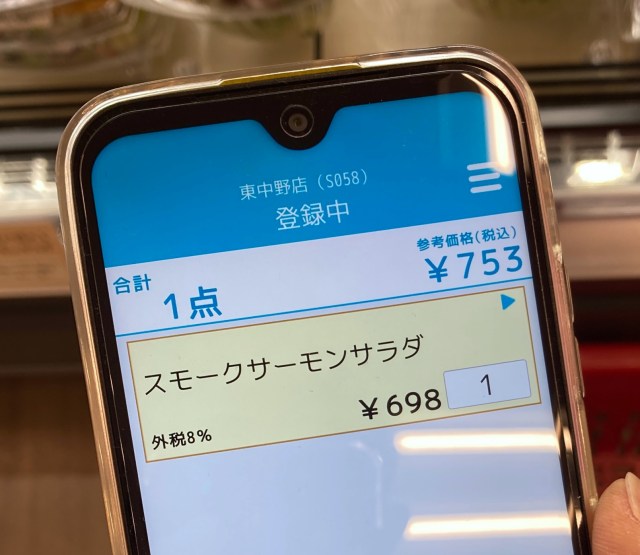
After the first scan, we quickly became used to the process, picking up our items, scanning them, and then placing them in the basket.
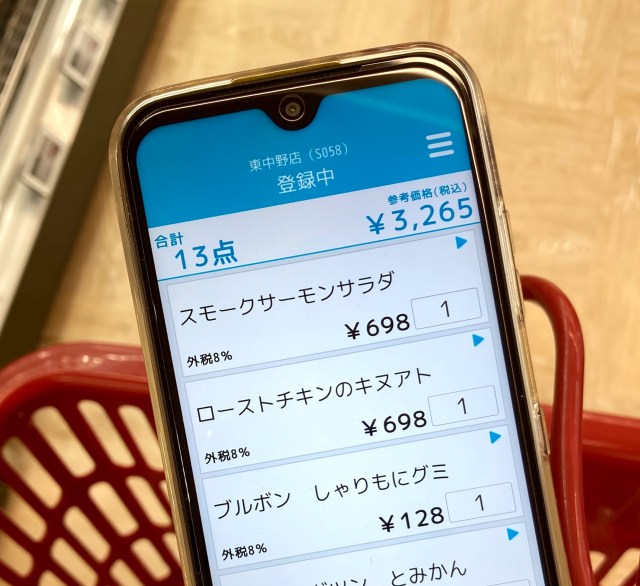
▼ With 13 items scanned, we had everything we needed, so now it was time to pay.
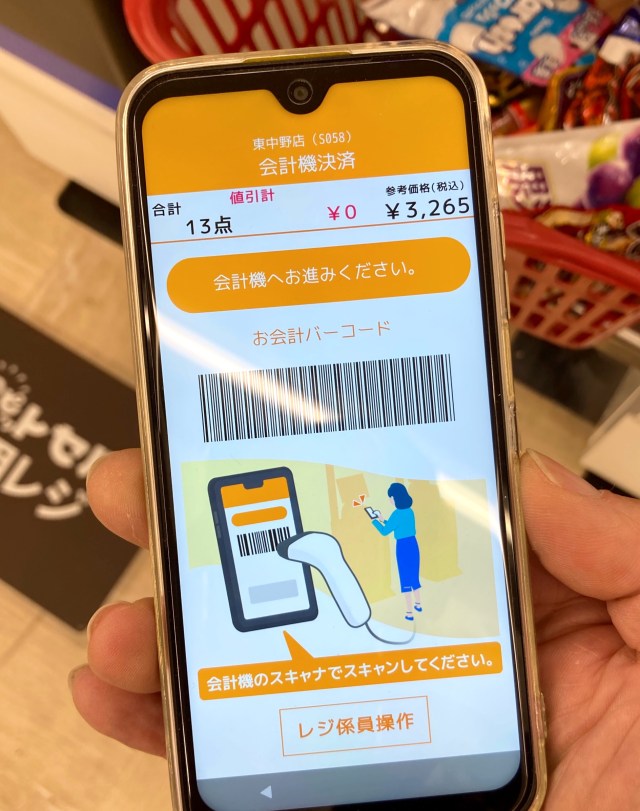
Heading over to the special self-checkout registers for Pipit Self customers, we used the scanner at the terminal to scan the barcode on our mobile scanner, which seemed like one too many scans in the streamlining process, given that some smart carts and mobile self-checkout systems abroad allow you to pay directly through the tablet or smart cart.
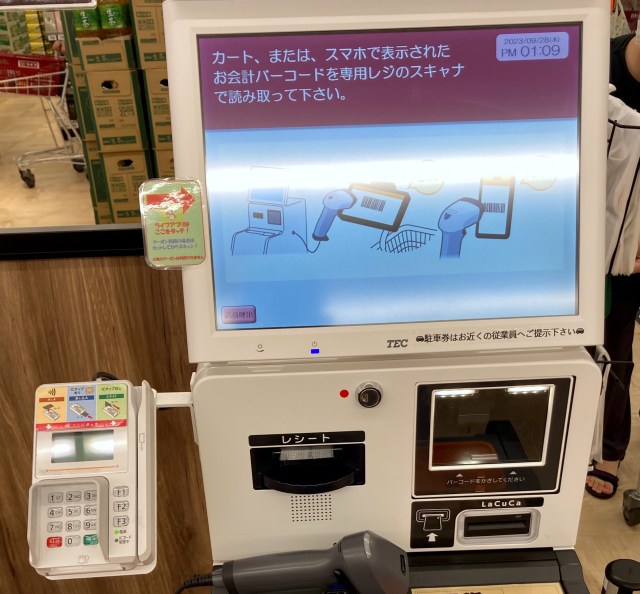
Japan is still mostly a cash society, though, which means paying at self-checkout registers like this is a necessary step, even as we move towards futuristic shopping experiences. At least now there are options to pay by credit card and payment apps as well, so you can choose your payment method on the screen.
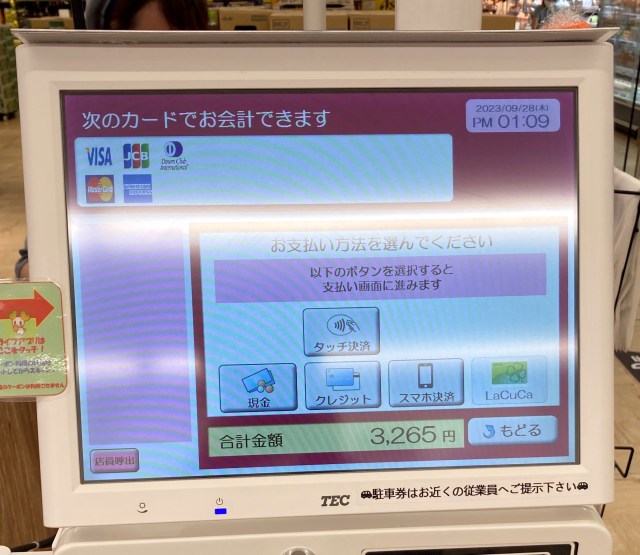
After making your payment, you’re done! If you used an in-store mobile smartphone device like we did, you’ll need to return it by placing it in the basket at the register.
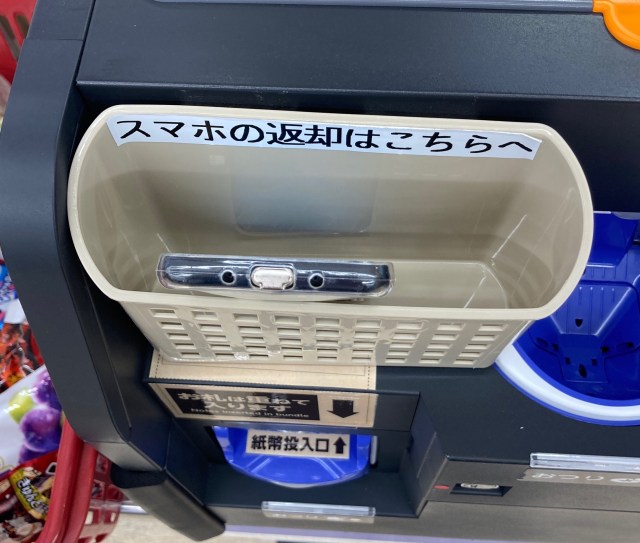
We found the system to be very convenient, but it doesn’t come without concerns for locals. One of the most glaringly obvious worries is the chance that some customers might fail to scan items, leading to a loss for the supermarket that might result in price hikes that would negatively impact all customers.
There’s also the possibility that children might drop items into the basket or cart without the adult knowing, which could result in those items being left at the self-checkout registers as they weren’t scanned. While these might seem like unnecessary concerns abroad, where systems like self-checkouts have been in place for years, here in Japan, where customers are only slowly making the jump from staff-scanned items to self-scanned ones, these are problems that are yet to be tested on a large scale.
In any case, we have high hopes that more stores will adopt this type of system in future, as it looks set to ease congestion and wait-times at checkouts. It’s the next best thing to shopping at one of Japan’s unstaffed stores, where you can buy everything from entrails to ice cream, without anyone around to bother you.
Store information
Life Higashi Nakano branch / ライフ 東中野店
Address: Tokyo-to, Nakano-ku, Higashinakano3-9-7
東京都中野区東中野 3-9-7
Hours: 9:00 a.m. – 12:00 a.m.
Related: NEWSCAST , Toshiba Tec Corporation
Photos © SoraNews24
● Want to hear about SoraNews24’s latest articles as soon as they’re published? Follow us on Facebook and Twitter!
Credit:

0 comments:
Post a Comment